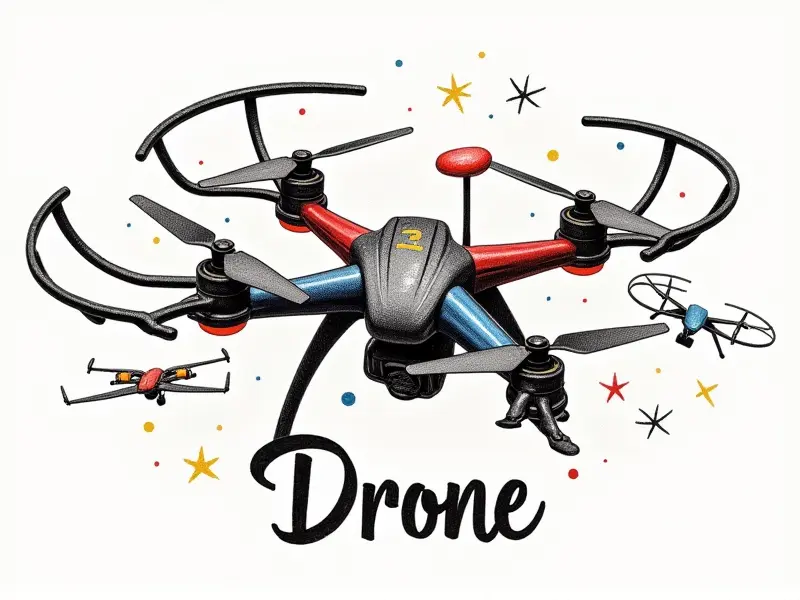DIY drone battery charger tips

Build Your Own Drone Battery Charger
If you're an avid drone enthusiast or a competitive racer in the FPV (First Person View) community, having reliable and efficient battery chargers is crucial. Building your own DIY drone battery charger can save money and provide customization options that commercial chargers might not offer. This article will guide you through the process of creating a simple yet effective RC battery charger.
DIY Guide to Charging RC Batteries
The first step in building your own drone battery charger is understanding the basics of RC batteries and charging requirements. Lithium-Polymer (LiPo) batteries are commonly used in drones due to their high energy density, but they require careful handling during charging to avoid damage or fire hazards.
- Understand Battery Chemistry: Learn about LiPo battery characteristics such as voltage levels and discharge rates.
- Select Appropriate Components: Choose the right charger circuit, power supply, connectors, and safety devices like balancing boards.
Craft a Simple Drone Battery Charger
To craft your own simple drone battery charger, follow these steps:
- Gather Materials: Collect all necessary components such as microcontroller board (e.g., Arduino), power supply unit, connectors, and safety devices.
- Design Circuitry: Create a basic circuit diagram that includes voltage regulation and protection circuits.
- Assemble Charger: Solder components together according to your design. Ensure proper insulation and heat management.
Make Your Own Efficient Drone Charger
To make an efficient drone charger, consider the following tips:
- Use High-Quality Components: Invest in reliable parts that can handle high currents without overheating or failing.
- Incorporate Smart Charging Features: Implement features like automatic balancing and temperature monitoring to ensure safe charging.
Easy DIY Project: Drone Battery Charger
This project is not only cost-effective but also educational. By building your own charger, you'll gain a deeper understanding of electronics and battery management systems (BMS).
- Learn Basic Electronics: Familiarize yourself with concepts like Ohm's Law, Kirchhoff’s laws, and basic circuit theory.
- Practice Soldering Skills: Improve your soldering techniques to ensure a clean and reliable connection between components.
Tips for Making a Drone Battery Charger
Here are some additional tips to help you create an effective DIY drone battery charger:
- Test Thoroughly: Before using your charger with actual batteries, test it extensively under various conditions.
- Document Your Build: Keep detailed notes and diagrams of your build process for future reference or troubleshooting.
Create a Reliable Drone Battery Charger
To ensure reliability, focus on the following aspects during construction:
- Use Quality Connectors: High-quality connectors reduce resistance and prevent overheating.
- Incorporate Overcurrent Protection: Include fuses or circuit breakers to protect against excessive current draw.
Build a Reliable DIY Drone Charger
A reliable charger is essential for maintaining your drone's performance and safety. Follow these guidelines to build a robust charger:
- Select Durable Components: Use components that are rated for high current and temperature.
- Incorporate Cooling Solutions: Implement cooling fans or heatsinks to manage heat dissipation effectively.
DIY Charger for Drones
A DIY charger can be tailored specifically to your needs, offering flexibility in terms of charging speed and battery compatibility. Here’s how you can customize your charger:
- Add Charging Profiles: Program different charging profiles for various types of batteries.
- Incorporate User Interface: Add buttons or an LCD screen to control the charger settings easily.
Simple Guide to Making RC Battery Chargers
Making your own RC battery chargers is a rewarding project that enhances both your technical skills and understanding of drone electronics. Follow this simple guide for a successful build:
- Plan Your Charger: Decide on the features you want in your charger, such as charging speed or safety measures.
- Select Components: Choose components that meet your requirements and budget constraints.
- Assemble and Test: Assemble your charger carefully and test it thoroughly before use.
Craft Your Own FPV Racing Drone Charger
If you're involved in FPV racing, having a high-performance charger is essential. Here’s how to craft an efficient charger for competitive use:
- Optimize Charging Speed: Design your charger to provide fast charging capabilities without compromising battery safety.
- Incorporate Advanced Safety Features: Include features like automatic balancing and temperature monitoring to ensure safe and reliable operation during races.
Conclusion
Building a DIY drone battery charger is an excellent way to save money, customize your charging setup, and gain valuable knowledge about electronics. By following the steps outlined in this guide, you can create a reliable and efficient charger that meets your specific needs. Whether you're a hobbyist or a professional racer, having a well-built charger will ensure optimal performance and safety for your drone batteries.

